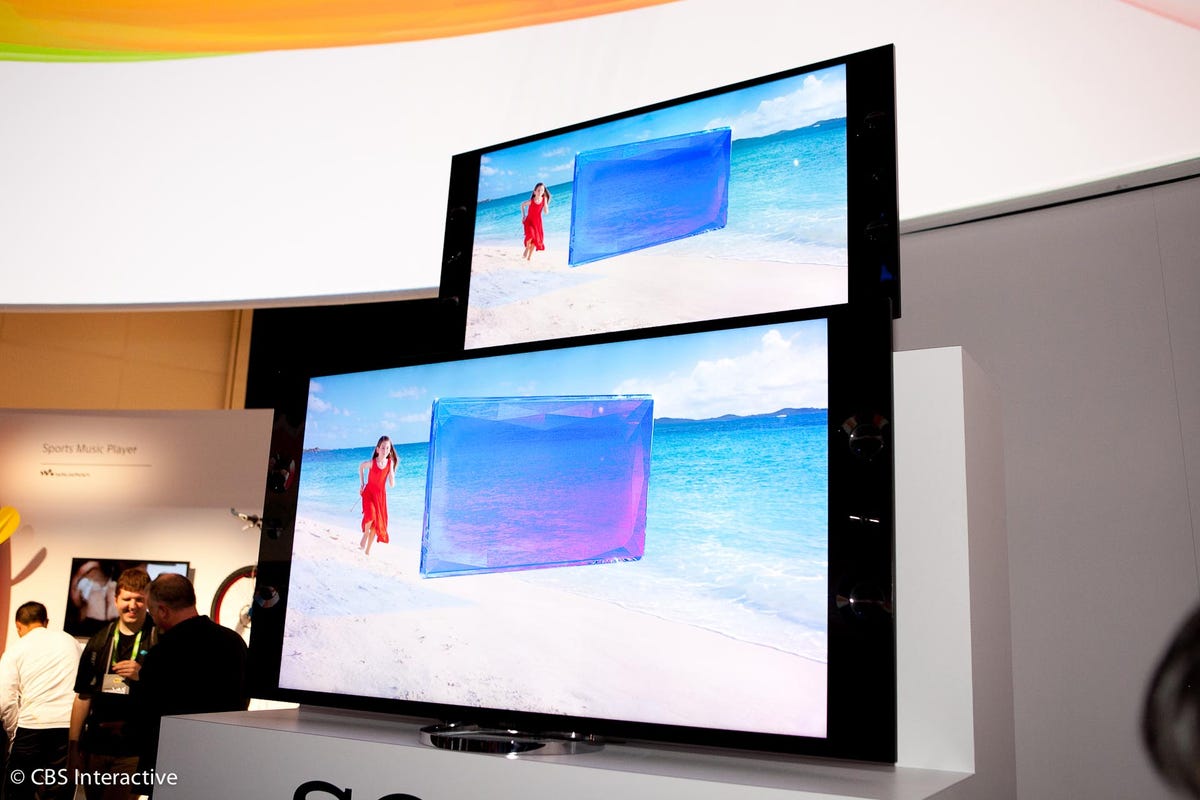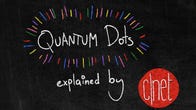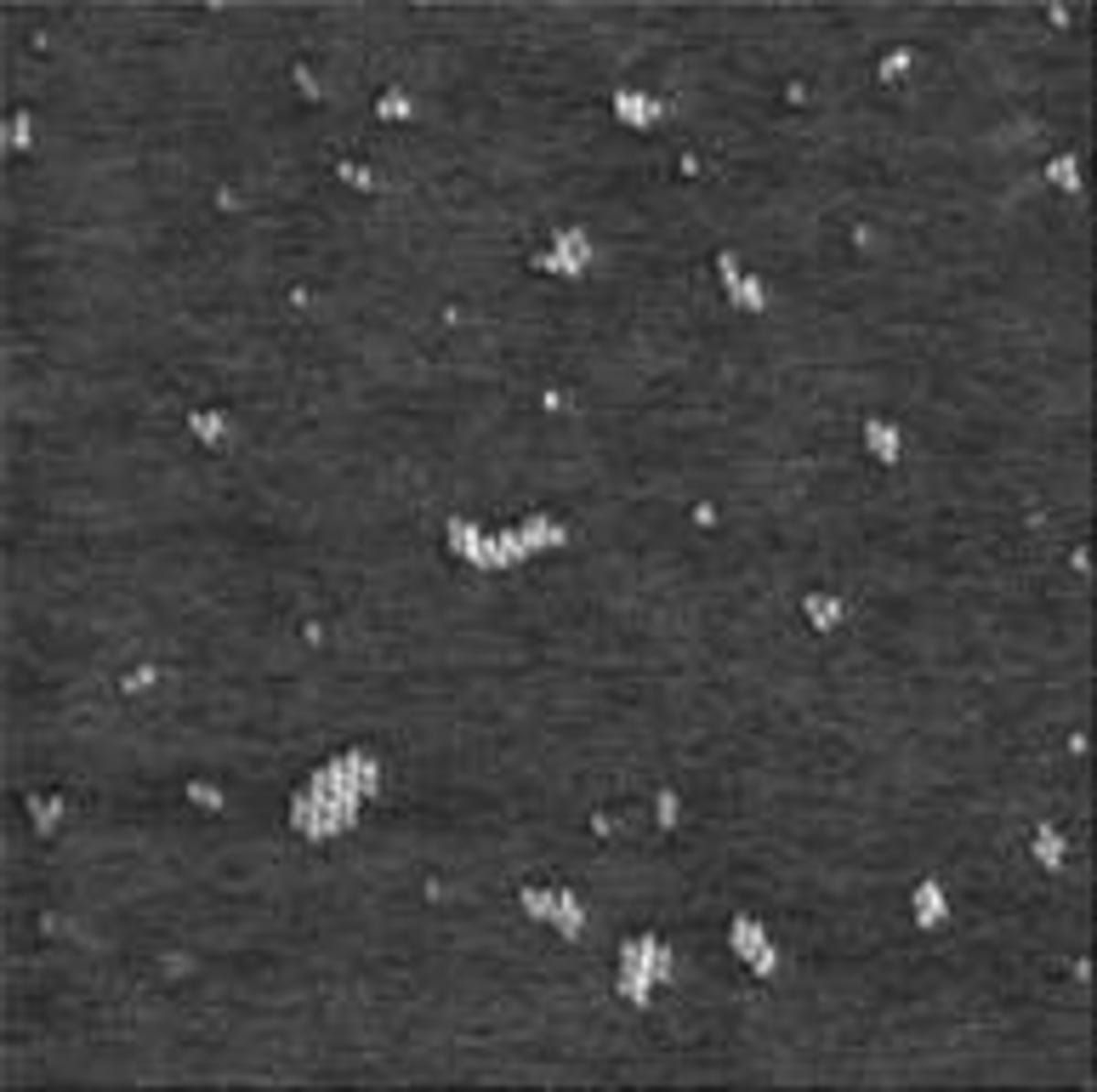
At CES in January, Sony announced several LCD TVs with “Triluminos,” a new backlighting method that they promise offered “rich, authentic color, and excellent red and green reproduction.” Digging deeper, it turns out Triluminos includes an optical component produced by QD Vision, Inc. called “Color IQ” which uses quantum dots to help create light.
OK, so what are quantum dots?
Quantum dots are a “semiconductor nanocrystal technology.” If you remember your high school (college?) physics, avail yourself of the Wiki page.


Now playing:
Watch this:
What is quantum dot?
2:46
If you don’t know your valence bands from your conduction bands, you can think of a quantum dot as this: tiny pieces of matter with unique properties, including the ability to emit light at very specific wavelengths. Sort of like microscopic pieces of glitter that glow green, red, or blue depending on their size.


QD Vision
Specific wavelengths of light are good. We need specific wavelengths of light, the more specific the better. All televisions create an image by combining the three additive primary colors: red, green, and blue (RGB). Sharp adds yellow, a secondary color, but this isn’t in any content and is created by the TV. Mixing RGB in varying amounts gives us all the colors possible in our current TV system.
All LCDs create these colors with filters. Plasma displays create them with phosphors that glow in the required color (similar to the way CRT tube TVs worked). OLED, depending on the company, is one or the other. LG’s method creates a “white” OLED then adds color filters. Samsung’s method has specific red, green, and blue OLED sub-pixels.
So where do quantum dots come in? Sony has a method.
Sony’s X900 and W900 lines Three of Sony’s 2013 TVs will use quantum dots in their backlighting, in the guise of QD Vision’s Color IQ tech (the 65X900, 55X900, and 55W900). A traditional LED LCD uses blue LEDs, coated with a yellow phosphor, to create “white” light. While reasonably efficient compared to other technologies (i.e. CCFL LCDs and plasmas), this still creates a lot of “wasted” energy. Orange, for example, doesn’t make it past the color filters on the front of the TV (instead, red and green are combined to create orange).
Triluminos uses blue LEDs, but instead of coating them with a yellow phosphor, the blue light from the LEDs passes through the Color IQ optical element containing red and green quantum dots. So the blue LEDs have two functions: create blue light, but also energize red- and green-emitting quantum dots so they in turn can create red and green light. About two-thirds of the light created by the blue LEDs is used to excite the QDs. Cool, right?


QD Vision
If you’re curious about how LCD backlighting works, check out Is LCD and LED LCD HDTV uniformity a problem? which has images and diagrams of how backlights work.
Oh, and if the “Triluminos” name sounds familiar, Sony has used it before. The 2013 version described here is referring to an edge-lit LED technology, not the RGB full-array LED backlighting from 2008.
Related stories
- LED LCD vs. plasma vs. LCD
- Active 3D vs. passive 3D: What’s better?
- Why Ultra HD 4K TVs are still stupid
- Why all HDMI cables are the same
- 1080i and 1080p are the same resolution
- TV tech explainer: Every HDTV technology decoded
How dots can help TV color Sony claims its new backlight technology allows for a wider color gamut compared to LCD TVs using “white” LEDs, as in more potential colors. Since all modern TVs are fully capable of reproducing every color in all current HDTV content, this is a bit of marketing hyperbole.
However, the benefits of this could go beyond cool, futuristic tech and WowNeeto-based marketing. When I’ve reviewed LED-lit projectors, I’ve found that the color possible from RGB LEDs looks more realistic than the same Rec. 709-calibrated colors created by color filters (DLP) or dichromatic mirrors (LCD/LCOS) as lit by UHP lamps. One TV engineer I asked about this phenomenon replied “LEDs are like painting with purer paint.”
Our own David Katzmaier often remarks in his reviews on the bluish cast seen on some conventional LED-based TVs compared to, say, plasma sets. “It’s usually most prevalent in dark areas, but I sometimes see a slight bluish ‘coldness’ in brighter material and skin tones too. In some cases I see it despite seemingly excellent color measurements from my instruments.”
So it’s possible that even with the same measured color points, quantum dot-enhanced displays could produce more realistic color. Will they? Will the color mixing required to create Rec. 709 from wildly oversaturated color points cause other issues? What effect will the color filters, which are still necessary on LCDs, have on this “purer” light? These are questions we can’t answer until we see the X900 series, and any future TVs with quantum dots.
This whole column and not one “Quantum Leap” joke. Oh dammit.


MIT
The current generation of quantum dot technology requires a primary light source like the blue LEDs in Sony’s Triluminos. This won’t always necessarily be the case. It will be possible to excite the quantum dots directly. This could be a full QD backlight, but it could be more. How about a direct-emissive display like OLED, but instead of Organic Light-Emitting Diodes, it’s sub-pixels filled with red, green, or blue quantum dots. QD Vision calls this a “QLED,” and it could have similar performance characteristics as OLED (like a truly infinite contrast ratio). Will it be easier to produce, offer better color, or have even lower power consumption? At this point, we have no idea. Given the production difficulties OLED has had, just the fact that there’s something on the horizon that could offer potentially similar performance is exciting.
Bottom line Unlike many of the new technologies on display at CES every year, quantum dots are real, and are potentially very cool. For now they reside only in a few high-end LCDs, but like OLED, they could hint at what a display of the future might be. Will they? We shall see.
Got a question for Geoff? Send him an e-mail! If it’s witty, amusing, and/or a good question, you may just see it in a post just like this one. No, he won’t tell you which TV to buy. Yes, he’ll probably truncate and/or clean up your e-mail. You can also send him a message on Twitter: @TechWriterGeoff.




